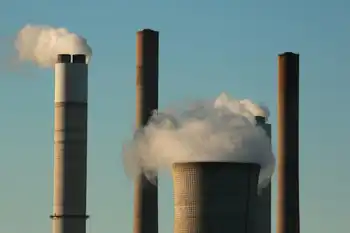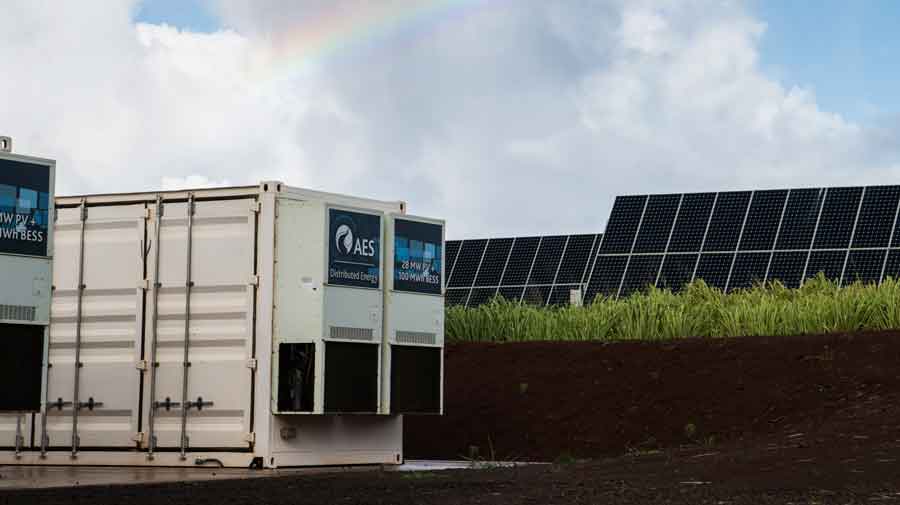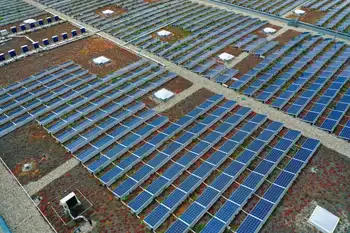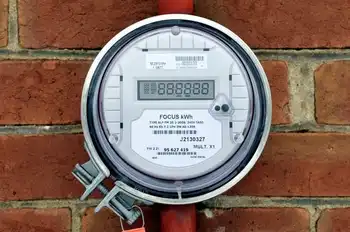Carbon emissions to peak in China by 2030
By Reuters
NFPA 70e Training
Our customized live online or in‑person group training can be delivered to your staff at your location.

- Live Online
- 6 hours Instructor-led
- Group Training Available
The study by energy and emissions experts at the Lawrence Berkeley National Laboratory in California adds to a growing body of studies that say China could reach its maximum output of carbon dioxide CO2 within two decades.
That matters for more than China. Its emissions path will be crucial to determining whether the world can restrict total greenhouse gas emissions to levels less likely to trigger dangerous climate change, such as more intense droughts, floods and storms that threaten crops and economic growth.
"Once nearly every household owns a refrigerator, a washing machine, air conditioners and other appliances, and once housing area per-capita has stabilized, per-household electricity growth will slow," said co-author Mark Levine in a statement.
China, with 1.34 billion people, already emits a quarter of the world's CO2. This is more than the United States, historically the world's top emitter of the main greenhouse gas from human activity fuelling climate change.
It overtook the United States several years ago. India is the third top carbon polluter.
How soon China's emissions peak and at what levels will depend on how vigorously the government pursues cleaner growth policies, especially moving energy from coal to nuclear, hydro-power and renewable energy, said the researchers.
China generates most of its electricity using coal, the dirtiest of the fossil fuels, but is already investing heavily in cleaner energy.
The researchers say China can achieve a peak earlier and lower than other studies have suggested, in part because by about 2030, the country's demand for many emissions-intensive goods and industries will reach a plateau, a factor they say those studies overlook. Such goods include steel and cement.
"It is a common belief that China's CO2 emissions will continue to grow throughout this century. We believe that this is not likely to be the case," says the study, published on the website of the Lawrence Berkeley Laboratory's China Energy Group china.lbl.gov/publications.
Among other reasons, the study cites computer models that indicate "urbanization will approach peak after 2030 or 2035 exports of energy-intensive industry will decline and low population growth".
Chinese census data showed population growth already slowing sharply in the decade to 2010.
China's high and fast-climbing output of CO2 from coal, oil and gas has put it in the center of negotiations seeking a new global pact to deal with global warming.
In 2009, China's emissions of carbon dioxide from fossil fuels reached 7.5 billion tonnes, a rise of 9 percent on the previous year, according to estimates from the BP oil group. The United States emitted 5.9 billion tonnes.
Under a "baseline" model that assumes China builds on current emissions-reduction policies "consistent with trends in market-based improvement", the nation's emissions are likely to plateau around 2030-35 at about 12 billion tonnes of CO2.
Under a more stringent set of green policies, emissions peak between 2025 and 2030 at about 9.7 billion tonnes of CO2.
Based on this scenario, there would be a dramatic reduction in coal's share of energy production, to as low as 30 percent by 2050, compared to 74 percent in 2005. Nuclear power would expand to 86 gigawatts by 2020 and as much as 550 gigawatts by mid-century.
Writing in the Financial Times, British climate change expert Nicholas Stern said China's plans to reduce emissions per unit of gross domestic product could take annual emissions to 12 billion tonnes in 2020 and 15 billion tonnes in 2030.
This assumed 7 percent economic growth and an unchanged emissions reduction target per unit of GDP.
"While this would be a major reduction, it would make it difficult for the world to achieve the target of avoiding warming of more than 2 degrees Celsius, as agreed at the UN summit in Cancún last December," Stern wrote.
"So it is vital for the safety of the world, and China, for China to find a way of increasing its ambitions for reducing emissions, with a view to peaking at 12 billion or 13 billion tonnes in the early 2020s, and returning to about 9 billion tonnes by 2030."
Recent Chinese reports have also suggested the country could reach an emissions peak around 2030-35, while falling short of what experts have said Beijing needs to do to help the world escape dangerous levels of global warming.
Beijing has resisted officially spelling out when its emissions could peak and also rejected any internationally binding cap on the greenhouse gas levels of China and other developing countries, saying they should be allowed to grow out of poverty while rich nations lead the way in cutting carbon.











